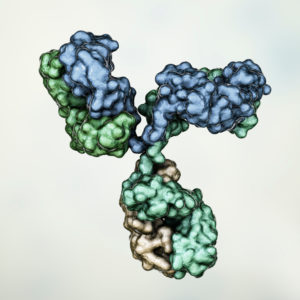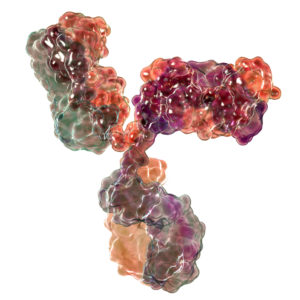Feline Leukemia Virus
Feline leukemia virus (FeLV) is an oncogenic gammaretrovirus that infects domestic cats and some wild felids, including the wildcat, the Florida panther and European and Iberian lynxes. Infection with FeLV is the primary cause of oncogenesis in domestic cats worldwide. However, following the implementation of test and removal schemes and the development and widespread use of vaccines, the prevalence of FeLV infection has greatly decreased in the last two decades.
Feline Leukemia Virus Background
Feline leukemia virus (FeLV) is a widespread pathogen of the domestic cat and is one of the most common infectious cat diseases in the United States, affecting 2-3% of all cats (Cornell University, 2016).
FeLV was first described in cats in 1964. It is an RNA virus in the subfamily Oncovirinae belonging to the Retroviridae family. Cats persistently infected with FeLV serve as sources of infection for other cats. The virus is shed in saliva, nasal secretions, urine, feces, and milk of infected cats. Cats at greatest risk of FeLV infection are those that may be exposed to infected cats, either via prolonged close contact or through bite wounds. Kittens are much more susceptible to FeLV infection than are adult cats, and therefore are at the greatest risk of infection if exposed. Transmission can also take place from an infected mother cat to her kittens, either before they are born or while they are nursing (Cornell University, 2016).
There are three major subgroups of FeLV: A, B and C. These subgroups were identified by viral interference assays in which prior infection of cells with one subgroup of FeLV prevents subsequent infection with murine sarcoma virus pseudotypes bearing an envelope glycoprotein of the same subgroup. FeLV-A is the most abundant subtype and is responsible for transmission of the virus between animals. Thus, vaccination against subgroup A virus is the sole requirement for inducing immunity to infection. FeLV subgroups B and C arise in subgroup A infected cats following the establishment of viraemia (Willett and Hosie, 2013).
Most frequently, an infected cat recovers and becomes immune. However, in a few cases, the virus establishes a persistent infection, which is marked by viraemia and an increased likelihood of developing severe and ultimately fatal disease, such as lymphomas and leukaemias, immune suppression and anaemia. There is no cure for the infection but two types of vaccines for FeLV are available; an adjuvanted killed virus noninfectious vaccine and a nonadjuvanted canarypox virus-vectored recombinant infectious vaccine. However, these do not offer 100% protection from the virus.
References
- Feline leukemia virus factsheet. Cornell University College of Veterinary Medicine, May 2016.
- Feline leukaemia virus factsheet. Small Animal Veterinary Surveillance Network (SAVSNET), University of Liverpool, September 2019.
- Willett and Hosie (2013). Feline leukaemia virus: half a century since its discovery. Vet J. 195(1):16-23.
No Results Found
The page you requested could not be found. Try refining your search, or use the navigation above to locate the post.
Feline Leukemia Virus Antigens
The Native Antigen Company is pleased to provide a recombinant FeLV p27 protein, manufactured in E. coli, with greater than 95% purity.
Feline Leukemia Virus Antibodies
The Native Antigen Company offers a range of FeLV p27 antibodies allowing you to pursue more detailed R&D activities, including diagnostic assay development and vaccine research.
Questions?
Check out our FAQ section for answers to the most frequently asked questions about our website and company.



